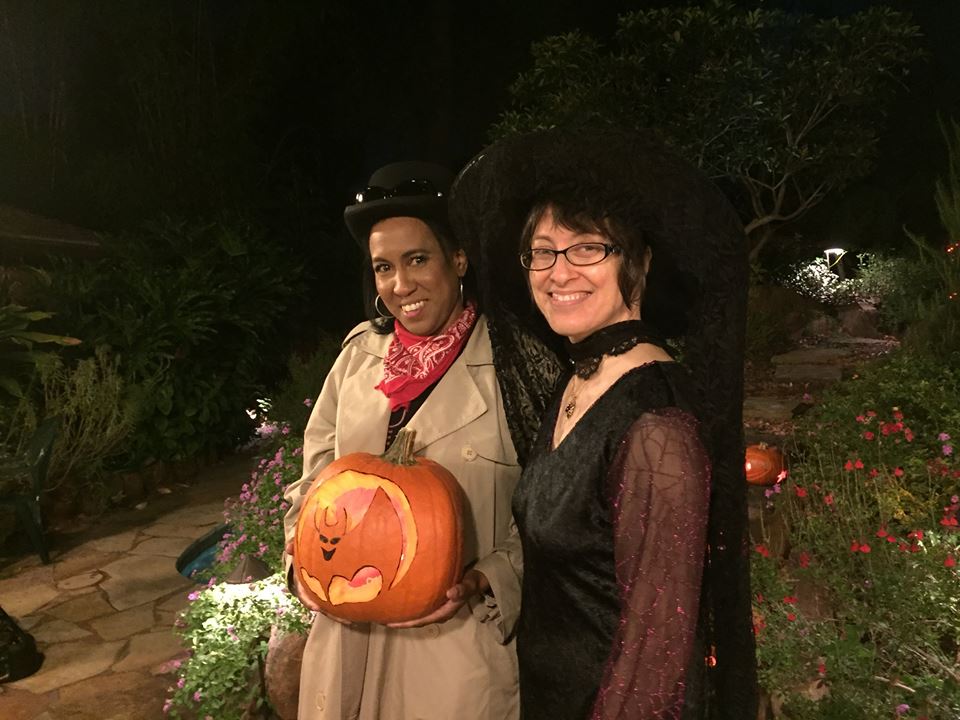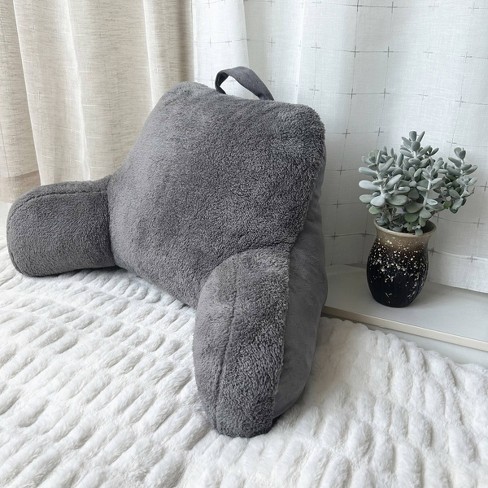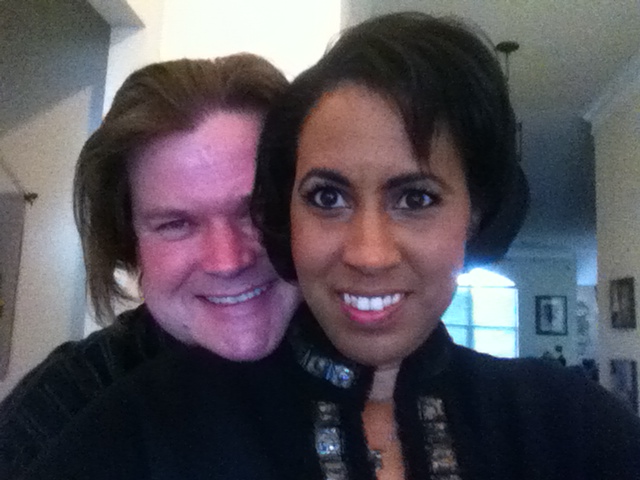
Just as we had the previous year, Gaye and I started her recovery by walking. As before it began with a slow shuffle from our bedroom in the back of our house to the front door and then back via a circuit of the living room and kitchen.
Gaye reviled the walker but used it all the same.
At first she was so weak that one circuit would wear her out. She would sleep, (or as close as she got to it) in the rental recliner in our bedroom, for hours after each circuit. Our first few days were two circuits, bath time, and then down for the night.
What was different this time was the sense of loss. While the first surgery had been difficult, (as if any surgery could be easy) there had been a sense of healing that spurred recovery. We were recovering from breast cancer.
We were winning!
This time our elation that Gaye had survived clotting issues (and then indifferent/neglectful) medical staff settled into quiet resignation. We survived—shellshocked and deeply wounded—now Gaye had to process the failed reconstruction. The best I could do was hold her hand.
An amputation of identity
Gaye had never been a “body” girl. Raised a devout catholic, she dressed modestly. In twenty years of marriage, she’s worn a swimsuit once, on our honeymoon in Puerto Rico, where no one else knew her. She will tell you in a heartbeat that she never traded or even leaned on her body for an advantage.
So, I’d love to tell you that Gaye bounced right back. That she felt no loss for what she had never used. That she was ready to move forward with Dr. M’s offer of another reconstruction, (without the vascular component that wrecked the previous reconstruction).
I’d equally love to tell you that she sprung back into life without care or concern for reconstruction at all.
Those would be lies.
Who am I if I’m not who I was?
Gaye had moments when she expressed hope and planned for how she would dress for the new reality. Then she would have moments when she would reflect on a favorite dress or top or outfit that she could no longer wear. Her pain broke my heart.
The question behind the mercurial shift was a question of identity. Fashion had always been Gaye’s form of artistic expression. Frayed jeans, Chucks, and a blazer paired with a curated T-shirt from her “whatever available” look turned many a fellow fashionista’s head. Wrap dresses, tunic tops, fun-casual outfits, and formal, on-the-town wear—Gaye has the eye for it all.
And it all brings her tremendous joy. She lost that for a minute. The liaison nurse from BC/BS assured Gaye that there were non-surgical options to try before she committed to another reconstruction. Dr. M promised that he would never abandon her and would do anything to make her whole, again.
The best options is useless when you’re unable to see tomorrow
All of it was well-intentioned. None of it eased Gaye’s pain or soothed her anxiety. When she cried, I held her. When she raged, I did my best to absorb and deflect. When she expressed hope, I gave a silent thanks to the universe for her resilience. Mostly, I thank Yoda that she talked. Gaye is silent at her lowest and after twenty years of marriage I still struggled to reach her when she goes that low.
You can get low but you can’t live there
But that’s not to say we didn’t try. When I felt that Gaye had been low enough, I pushed, pulled, cajoled, and conned her out of the chair, out of her funk, and out of the trap of misery. I’m a hero, you see.
Yeah, all BS. Really, I did nothing but prompt her, crack jokes, and make up songs. When met with indifference, I continued. When met with hostility, I doubled (and softened) my efforts. When all-else failed, I danced the cats through the room to my made up songs.
Friends help, so do brownies

I’ve previously stated how important our support circle has been to us in our recovery. But there is no over-stating how much our friends—some of who we had neer met IRL—lifted us up. Jennifer and I were scribble siblings for years, trading writing, food recommendations, and cat memes. She was a voice of support during Gaye’s first diagnosis. At first post about the second diagnosis, she was only a click away. Her care manifested in food. Brownies from Jennifer were more than sweet treats, they were a variety pack of love.

Like Jennifer, Bryan and I were social media friends for years. Gaye extended some professional advice at the cusp of the pandemic. Then, out of the blue, he reached out. Also like Jennifer, his love and concern manifested in food.

More than a DoorDash deliver, more than a meal, (we actually made two meals off of this) the food was a hug in the middle of dire times. In that moment, we were not alone in our climb back. We have people.

The tough stuff was all her
Gaye did the work. Using physical therapy training, she rolled out of the chair and she walked the house. Dawn, with the best intentions, offered a Rollator walker, (it has handbrakes and a seat). Not only did Gaye refuse, by the end of the second week, she gave up the basic walker the hospital had sent home with her.
She graduated from walking the house to walking the driveway. Then she walked the block. Then she walked the neighborhood. She started to work around her new “normal” and she began to plan.
Cancer will take your identity but it will poison your joy—you have to find your joy in small victories
Gaye wanted to bathe herself and that became her new goal. When she no longer needed Dawn’s help, she insisted on bathing and dressing privately. I insisted on being outside the door in case she needed me.
Then she wanted to sit up in the living room and work, away from the confining recliner. My job was to keep the cats from climbing on her. They liked that almost as much as they liked the singing/dancing routines.
When she could manage working from the couch, managed to sit up for more than a couple of hours, she wanted to go places and do things. Errands, treats, just to drive, she said. But as much as she wanted to go/make/do, Gaye did not want to be around people. She didn’t want people to see her. She didn’t want to be judged. Cancer had corrupted Gaye’s love of going. Indeed if there was a theme to this recovery it was fear and resentment.
Judged by who?
We watched a lot of TV, too. One of our few indulgences, (we’ll discuss the financial cost of breast cancer another time) is Disney+. When I suggested the live-action movie Cruella, she was less than enthusiastic.
Gaye prefers Marvel and Star Wars because they are (usually) safe from real-life issues. She didn’t have to think or invest much into either and both kept me quiet. But I had read the reviews and I had a plan. So, I insist on Cruella. Besides, as Gaye often reasoned, she would be asleep in the first 20 minutes, anyway.
Then she saw the clothes. Set in swinging Mod-era London, Cruella is a fashion wonderland populated by stand-ins for Chanel, Saint Laurant—all in a candy-land color palette. Every shade and hue of person, every possible type of fabric and cut were on full display. There was some fun writing, too.
Gaye was enthralled. Then, in a resale-shop scene she got quiet. And I got scared. Her favorite character, Artie, (John McCrea) had just strutted into the scene in a sheer, lace top with a pussy-bow tie. The pussy-bow tie had been Gaye’s signature look.
After minutes of nerve-wracking silence, she asked if she wore a lace black top with a suit, sans prosthetics did I think anyone would see/notice her mastectomy scars?
“If they’re looking that close they’re not a hater, they’re a fan.”
Gaye’s smile, her laughter of delight felt like my purpose in life.
Takeaways:
- There are no high-roads out of a bad surgical outcome
- Your loved one has to have the space to walk the low roads
- She can get low but your job is to make sure she doesn’t try to live there
- Lean on your friends and family—they want to help you both
- Find what interests her most in life and use it to guide her back
- Where there is hope, there is life after breast cancer
- Your job is to keep the hope coming
Stay positive, stay strong.
All the photos belong to the author.




















